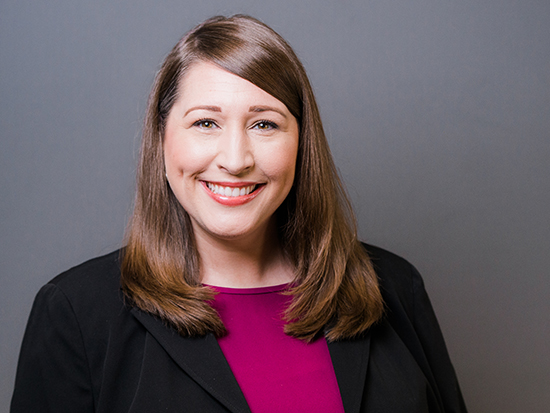 If it’s fine for you to take a quick break from work to schedule a doctor’s appointment, tackle your project list in the order you choose, or come in late because you were waiting for an appliance repair, you have a flexible work schedule.
If it’s fine for you to take a quick break from work to schedule a doctor’s appointment, tackle your project list in the order you choose, or come in late because you were waiting for an appliance repair, you have a flexible work schedule.
Over the past several decades, with the rise of the knowledge economy, more and more workers have moved to flexible work schedules. The COVID pandemic pushed this trend into overdrive. But as many of us discovered during COVID, blending work and family life can bring stress as well.
“Applicants and employees want flexibility, and all the surveys say the same thing,” said Scott Boyar, Ph.D., a professor of management in the UAB Collat School of Business who has been studying work-family and work-life balance for two decades. “Data shows that flexibility helps with recruiting and retention” as well, Boyar noted.
Does flexibility always lead to better work-life balance?
But does flexibility actually help employees achieve better work-life balance? Here, the answer is not so clear, Boyar says. In two recent papers, Boyar and co-authors provide some of the first detailed examinations of characteristics of employees who benefit the most from work flexibility.
Last year, they reported on the effects of procrastination on work-family conflict for workers with flexible schedules. “Procrastination appears to cancel out the benefits that flexibility provides in work demands,” Boyar said.
 Scott Boyar, Ph.D., professor of management in the UAB Collat School of Business, has been studying work-family and work-life balance for two decades.In May 2025, their paper “Spoiled for Choice? When Work Flexibility Improves or Impairs Work-Life Outcomes” was published in the Journal of Management. In that study, Boyar and his co-authors found that a key factor in turning work flexibility into better work-life balance is planning — especially for employees with “low future temporal focus,” who tend to avoid planning by default.
Scott Boyar, Ph.D., professor of management in the UAB Collat School of Business, has been studying work-family and work-life balance for two decades.In May 2025, their paper “Spoiled for Choice? When Work Flexibility Improves or Impairs Work-Life Outcomes” was published in the Journal of Management. In that study, Boyar and his co-authors found that a key factor in turning work flexibility into better work-life balance is planning — especially for employees with “low future temporal focus,” who tend to avoid planning by default.
The “Spoiled for Choice” paper was based on data from several hundred participants with flexible work schedules, who enrolled in two separate studies. Each group took a series of surveys that measured their future focus, typical planning behavior and their ratings of their work-life effectiveness — the extent to which they felt they were successfully performing their work and family/life roles.
More flexibility + more routine = less planning
Workers who were not inclined to plan by temperament (with low future temporal focus), but had unstable schedules or significant interruptions, actually showed the greatest increase in planning behavior in the study. They also reported better work-life balance and lower levels of exhaustion. But workers with low future temporal focus were least likely to spend time planning when they had stable schedules, or experienced fewer regular disruptions. And that “ultimately impaired work-life outcomes,” the researchers write in their paper. Workers with high future temporal focus did not adjust their planning time based on their schedule stability or number of interruptions. “Planners are going to plan, no matter what,” Boyar said.
“One of the hottest areas there is”
Planning for Boyar’s two recently published studies of work flexibility began in 2018, when interest on the topic seemed to be waning, he says. “We thought we might have to move on to something else,” he recalled. But then the COVID pandemic happened, and suddenly businesses worldwide were interested in research on flexible work schedules. “Now, it is one of the hottest areas there is,” Boyar said. He is currently studying worker effectiveness in office, remote and hybrid settings with Collat School of Business colleagues C. Allen Gorman, Ph.D., and John Martin, Ph.D.
It is not surprising that lack of planning leads to poorer work-life balance and more exhaustion. Research going back decades has demonstrated that planning is closely tied to work effectiveness. But “planning is cognitively demanding,” Boyar said. “And truthfully, we don’t need to plan everything; it is better to save those resources in some circumstances,” and simply adapt to issues as they arise, he said. “The larger question is, When is planning needed?” One conclusion of the “Spoiled for Choice” paper is that workers with low future temporal focus may make incorrect decisions about when to devote their cognitive resources to planning.
“A sense of overconfidence”
Boyar and his co-authors, Brandon Smit, Ph.D., of Bentley University, and Carl Maertz, Ph.D., of the University of Louisville, hypothesize that people who are not inclined to plan tend to respond to greater flexibility with “a sense of overconfidence.” That leads them to spend less time scrutinizing how they will cope with demands, especially when their schedules are stable and interruptions are few. And that “may ultimately lead to a lack of preparation and subsequent strain,” the researchers write.
Training in planning and time-management skills could help workers turn flexibility into better efficiency in their work and better work-life balance, Boyar points out. “Our findings suggest that the effectiveness of flexibility, and the experience of work-life balance more broadly, could be substantially enhanced with simple, low-cost planning interventions that prompt controlled processing about work-life demands,” he and his co-authors write. Educational efforts, they note later, “could also focus on warning employees of the potential pitfalls associated with flexible work arrangements so that they can take steps to avoid them.”
Strategies for better planning
 Kathryn Jones, Ph.D., clinical coordinator at the UAB Employee Assistance and Counseling CenterCan someone who has always struggled to plan effectively improve? “Absolutely, there can be improvement,” said Kathryn Jones, Ph.D., clinical coordinator at the UAB Employee Assistance and Counseling Center.
Kathryn Jones, Ph.D., clinical coordinator at the UAB Employee Assistance and Counseling CenterCan someone who has always struggled to plan effectively improve? “Absolutely, there can be improvement,” said Kathryn Jones, Ph.D., clinical coordinator at the UAB Employee Assistance and Counseling Center.
Jones, a licensed counselor and board-certified life coach, regularly works with clients who are looking for help with a range of personal and professional goals, including organization, weight loss, and career planning. UAB employees and members of their immediate households can take advantage of no-cost life coaching sessions — and no-cost counseling sessions — at the EACC each year. (Life coaching never includes counseling, which is focused on mental health concerns, Jones explains. If a client needs both, counseling always comes first, and coaching would be put on hold until the counseling needs are addressed she says. Learn more about life coaching and counseling from the EACC here.)
During the first two years of the pandemic, the EACC’s life coaches had many appointments with employees seeking help with “planning, time management and how to separate work and life,” Jones said, and “time management and managing to-do lists are some of the top reasons why people come to see us for life coaching” today, she added.
Jones and the other life coaches at the EACC help clients clarify goals and break them down into smaller steps, set concrete action items to reach those goals and establish reasonable deadlines. “We act as their cheerleaders and accountability partners,” Jones said. “It helps to have an extra brain thinking through the issues you are dealing with from another perspective. And we are going to hold you accountable to your homework. If you weren’t able to do the homework, that is good information as well. What got in your way? Did the kids get sick? Did your boss give you an extra project? Then we can think through how to account for those things.”
Although each situation has its unique factors, Jones says that there are common strategies that help.
1. Create an action priority matrix. This tool groups tasks into four quadrants: low effort, high impact; high effort, high impact; low effort, low impact; and high effort, low impact. “This is a way to identify quick wins, big projects, filler tasks and hard slogs,” Jones said. “It gives you a guide to how to better manage your time.”
2. Identify hidden time wasters and interruptions. Jones will often give clients a chart to keep on their desk and fill out in real time. “Our memories are not reliable,” she said. “When we keep track of them, most of us are surprised by how many time wasters and interruptions we really have.”
3. Find ways to refocus. Some interruptions can be eliminated, or at least reduced, by closing an office door or turning off email for a time. Others are unavoidable. “So many people at UAB work in really dynamic situations,” Jones noted. “You may have a pager around your neck that could go off at any moment. That’s an interruption that we can’t get rid of; instead, we can think about how we refocus after interruptions. There is always something that will derail your plan; we help clients think through strategies to get back on task. That may look like getting up and taking a lap around the office, or taking two minutes to do a mindfulness exercise.”
4. Consider your flow of energy throughout the day. “When is your peak focus and how can you structure your day around that?” Jones said. “For some people it’s 7–10 in the morning; for others it is 2–5 in the afternoon. If that’s you and you are trying to tackle your hardest tasks in the morning, you are not using your time and skills really well.”
5. Plan for what’s not in your plan. Jones says that a common mistake in creating a work plan is to overschedule — filling up the entire 40-plus hours with tasks, which runs into the reality of bathroom breaks, transitioning between meetings and other necessities of our working lives. Another tip: “Keep a ‘done’ list in addition to a ‘to-do’ list,” Jones said. “You will always wind up doing things that are not on your to-do list. Keeping track of those on a ‘done’ list gives you a broader picture of what you are actually doing each day,” she said. “It can also shift your perspective; you may not have checked off everything on your ‘to-do’ list, but your done list are things that you won’t have to do tomorrow, and you deserve to celebrate those wins.”
6. Change takes practice. “For something to work, there has to be repetition,” Jones said. “Many people come in feeling disheartened or defeated because they have tried before and don’t feel like it worked. But many have only tried for a few days. We start by talking about what our clients have tried before and what happened. We brainstorm strategies to handle unexpected events, but also we help them realize the power of committing to the plan, even if they are not seeing a lot of change right away. We remind people, ‘This isn’t a sprint.’ We have a fast-paced, quick-wins world, but the time it takes to invest in processes is worth it.”
Help designed for UAB
One of the advantages of talking with Jones or any of the life coaches at the EACC is their familiarity with UAB. “We have done this with lots of employees,” Jones said. “Certain jobs tend to have the same interruptions, and schools have certain cultures. That helps us to know what we need to plan for when we are working with a new client.”
UAB employees and members of their immediate household can receive free life coaching sessions every year from the Employee Assistance and Counseling Center. Call 205-934-2281, email